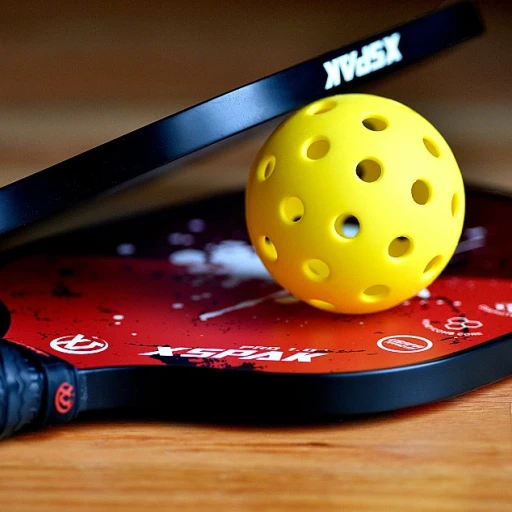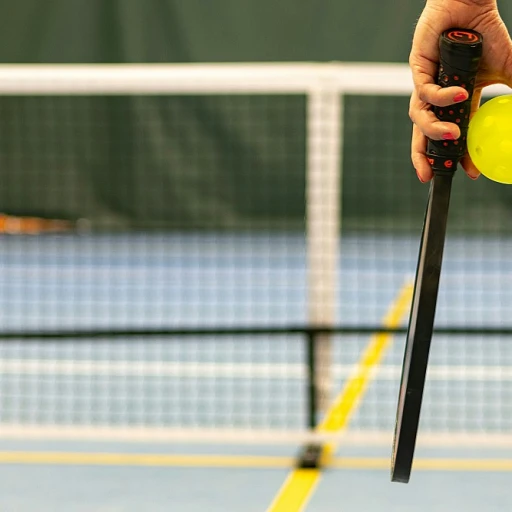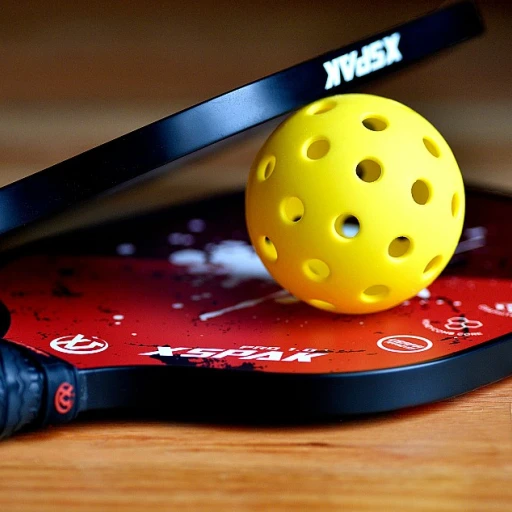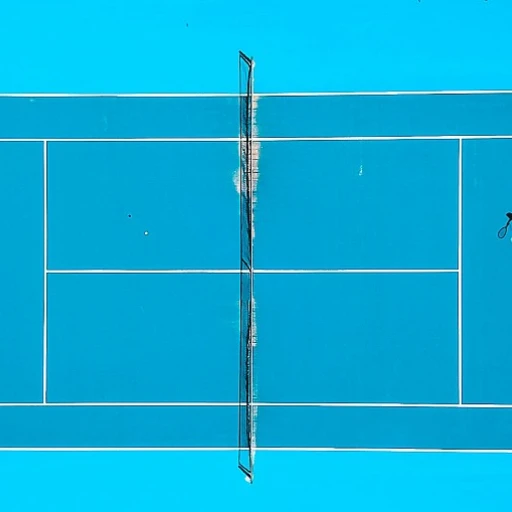
Understanding Lead Tape in Pickleball
Exploring the Influence of Lead Tape on Paddle Dynamics
Pickleball enthusiasts constantly seek ways to elevate their game, and one modification that players often consider is the strategic use of revitalizing their performance with lead tape. This seemingly simple addition can drastically enhance the paddle's characteristics, impacting everything from swing weight and balance to power control and stability.
Lead tape, when applied correctly, allows players to add weight and adjust the weight distribution of their pickleball paddles. By doing so, players can shift the balance towards the paddle head, tailor the swing dynamics, and find the best configuration that suits their personal game style. This adjustment can lead to a more pronounced sweet spot, giving players more control and power.
Using lead tape can transform a paddle's performance, making it indispensable for players aiming to gain power without sacrificing control. However, the process of adding lead should be approached with consideration, especially when understanding the rules and regulations surrounding tournament play.
The adjustments gained from strategically adding weight can enable paddle wielders to fine-tune their equipment much like professionals do. As you explore this addition, remember to balance the benefits with potential drawbacks, which will be further discussed in subsequent sections.
Benefits of Using Lead Tape
Boosting Your Game with Lead Tape
Adding lead tape to your pickleball paddle can significantly enhance your game by adjusting the weight and balance of the paddle. This modification is popular among players looking to fine-tune their equipment for better performance. Here's how it can benefit you:
- Increased Power: By adding weight to the paddle head, players can generate more power in their shots. This is particularly beneficial for those looking to add more force to their swings without compromising control.
- Improved Stability: The added weight from the lead tape helps stabilize the paddle, making it easier to maintain control during fast-paced rallies. This stability can be crucial for maintaining accuracy and consistency in your shots.
- Enhanced Sweet Spot: Adjusting the weight distribution with lead tape can help in finding the best sweet spot on your paddle. This can lead to more effective and precise shots, giving you an edge over your opponents.
- Customizable Balance: Players can experiment with different placements of the tape to achieve their desired balance. Whether you prefer a head-heavy or balanced paddle, lead tape allows for personalized adjustments.
While the benefits are clear, it's essential to consider the rules and regulations regarding paddle modifications in official play. For more insights on how to revitalize your pickleball game, read this guide.
How to Apply Lead Tape to Your Paddle
Step-by-Step Guide to Applying Lead Tape
Understanding how to apply lead tape to your pickleball paddle can significantly enhance your game. Adding weight to specific areas of the paddle can shift the balance and swing weight, giving you greater control and stability during play. Here's a practical guide to help you successfully implement this modification:- Select the Right Lead Tape:
- Begin by purchasing lead tape from a local shop or online source that caters to pickleball paddles.
- Opt for a tape width that matches your preferences for padding and weight distribution.
- Ensure it is designed specifically for sporting equipment to adhere securely under game conditions.
- Determine the Placement:
- Adding lead to the paddle head will increase power, while positioning it at the handle might improve control and balance.
- Test different placements to find what best suits your style and desired enhancements. This trial might be key to optimizing your playing experience.
- Application Process:
- Clean the Paddle Surface: Wipe the area where you intend to apply the tape with a damp cloth to ensure adhesion.
- Cut the Tape: Cut strips of lead tape according to your need. Remember to check the game rules regarding weight limits.
- Apply the Tape: Carefully stick the tape in your chosen positions. Firmly press it down to achieve an even and bubble-free application.
- Check the Weight: Weigh your paddle before and after to ensure the added weight aligns with your preferences and meets official regulations.
- Evaluate and Adjust:
- Track how your paddle performs on the court and make any necessary adjustments to the tape positions.
- Consult resources on mastering techniques, such as mastering the art of pickleball stacking, to further hone your skills after installation.
Considerations and Precautions
Essential Considerations for Applying Lead Tape
When considering adding lead tape to your pickleball paddles, it's important to be aware of a few key factors that can affect both performance and safety. Adding weight to a paddle head can significantly shift the balance and dynamics of your paddle, and it's crucial to follow the rules and guidelines to achieve the best results.- Balance and Stability: Adding lead tape to your paddle can improve balance and stability, enhancing both control and power. However, be mindful of overloading your paddle with too much tape, as it can negatively impact your swing weight and fatigue your arm quickly during the game.
- Placement and Amount: Carefully decide where and how much lead tape to apply to your paddle. For many players, placing tape lead near the head of the paddle will increase power, while near the sweet spot can offer more control. It's often a trial-and-error process to find the right weight distribution that suits your style and enhances your game.
- Safety and Maintenance: When using lead tape, safety precautions should be observed. Avoid direct contact with the lead material; using a layer of electrical tape to cover the lead tape can provide a protective barrier. Additionally, regularly check your paddle to ensure the tape is intact and hasn't become loose or damaged during play.
- Regulations and Limits: While most pickleball players can enjoy customizing their paddles with lead tape, it's vital to ensure that any modifications comply with official regulations and do not surpass allowed limits.
Comparing Lead Tape to Other Modifications
Exploring Lead Tape Modifications Compared to Other Options
When it comes to enhancing your pickleball paddle, lead tape is just one of the many options available to increase performance on the court. The choice between lead tape and other modifications, such as changing grips or opting for different types of paddles, largely depends on the specific needs and preferences of pickleball players. Lead tape holds an edge for those keen on customizing the weight distribution and balance of their pickleball paddle. Applying lead tape allows players to add extra weight directly to the paddle head, which in turn can affect the swing weight and power. This provides a level of customization that many pickleball enthusiasts find beneficial, offering improved control and a more defined sweet spot when you add lead strategically. However, it's essential to consider that while lead tape can offer power and stability, there are alternative modifications available:- Paddle Grips: Altering the grip can dramatically change how a pickleball paddle feels during play. A thicker grip might offer more comfort, while a tacky grip provides a better hold, making it easier to maneuver the paddle during intense games.
- Different Paddle Materials: The composition of pickleball paddles can affect weight and responsiveness. Choosing a paddle made from composite materials can impact the feel and power delivery differently from opting for graphite or wood.
- Head Shape and Design: Paddles with varying head shapes offer alternate gameplay experiences. Broader paddle heads can provide a larger sweet spot, which can be crucial for beginners, while others prefer a slimmer design for more precise control.








